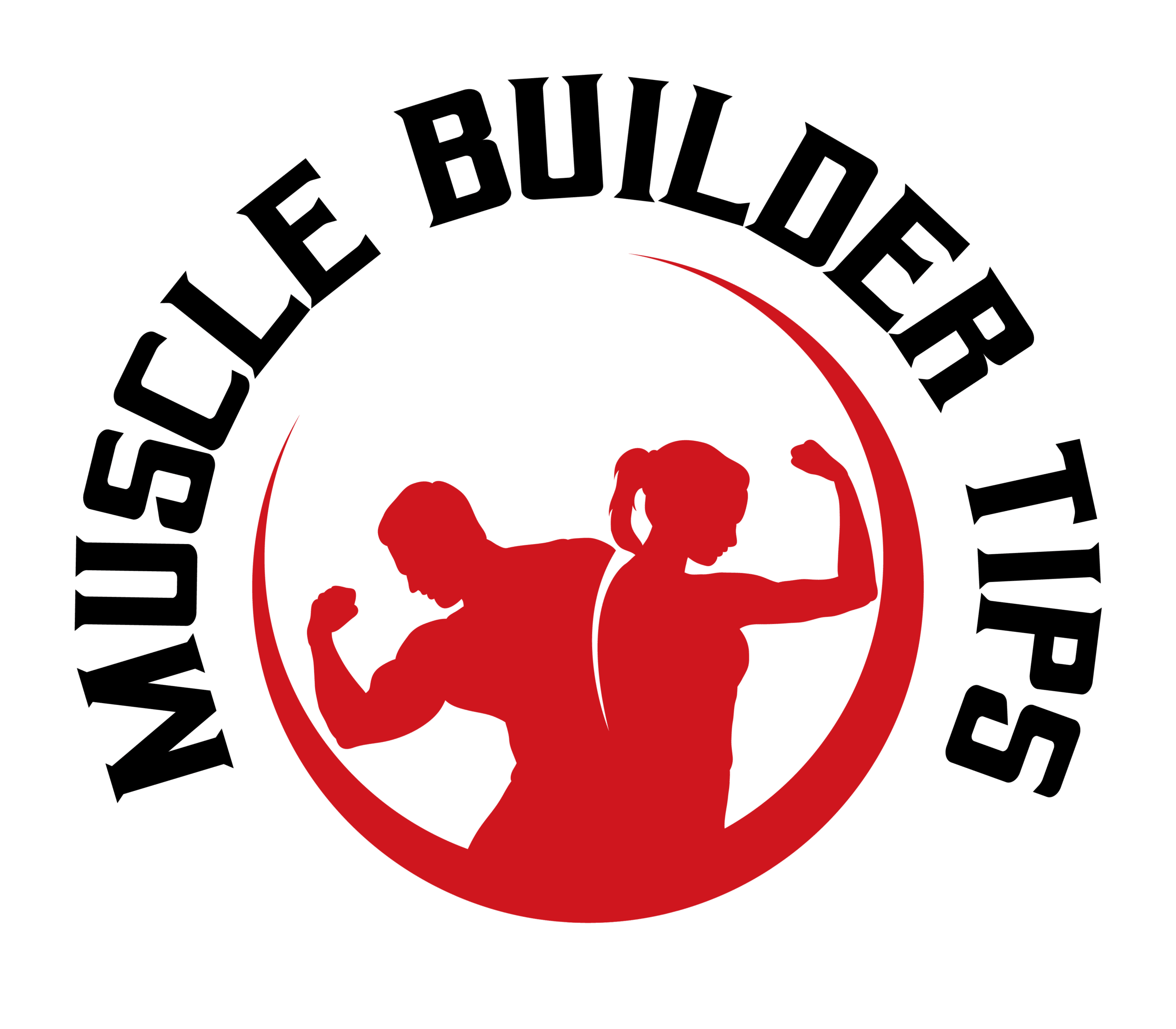
Have you ever wondered how long it takes for a woman to build muscle? It’s a common question, especially among those who are new to strength training. Well, you’re in luck! In this article, we will dive into the details and answer that burning question of yours. So, grab a cup of tea or a glass of water, sit back, and get ready to learn just how long it takes for a woman to build muscle.
When it comes to building muscle for a woman, there are various factors that can influence the time it takes to see noticeable results. These factors include your current fitness level, genetics, diet, sleep, and the type and intensity of your workouts. Generally speaking, it takes women a bit longer to build muscle compared to men due to differences in hormones and metabolism. However, with consistency and the right approach, women can absolutely achieve their muscle-building goals. In the next few paragraphs, we’ll explore some strategies to help you speed up the process and maximize your gains. So, keep reading because we’ve got you covered!

This image is property of pixabay.com.
How Long Does It Take To Build Muscle For A Woman
Building muscle is often seen as a goal predominantly pursued by men. However, more and more women are recognizing the benefits of strength training and are now actively seeking ways to build muscle. If you’re a woman interested in embarking on a muscle-building journey, it’s natural to wonder how long it will take to see results. While the timeline may vary from person to person, there are several important factors to consider.
Factors Affecting Muscle Building
Several factors contribute to the rate at which muscles develop in women. One of the key influences is hormonal balance. Testosterone, the hormone responsible for muscle growth, is generally higher in men, which gives them an advantage when it comes to building muscle. However, women also naturally produce testosterone, albeit in smaller amounts, which allows for muscle growth.
Another factor that affects muscle building in women is body composition. Women generally have a higher percentage of body fat compared to men, which can influence the rate at which muscle is developed. It’s important to remember that muscle weighs more than fat, so it may not be solely about the number on the scale, but rather the transformation of your body composition.
Differences in Muscle Building between Men and Women
Men tend to have a greater potential for muscle growth due to their higher testosterone levels. This can make it seem like women will take longer to build muscle. However, with consistent training and proper nutrition, women can still achieve significant muscle gains. While women may not develop muscles as quickly as men, they can ultimately achieve the same level of strength and definition with dedication and perseverance.
Determining the Timelines for Muscle Building
Individual Variations in Muscle Building
Individual variations play a significant role in the timeline for muscle building. No two people have the same genetics, body composition, or metabolic rates. Therefore, it is essential to recognize and accept that your journey to building muscle will be unique to you.
Factors such as age, genetics, prior training experience, and overall health also come into play when determining the timeline for muscle building. Younger individuals may see quicker results due to their higher natural metabolism and hormone levels, while older individuals may experience slower progress. Genetics also play a part in determining how your body responds to training, as some individuals naturally have a predisposition for greater muscle growth.
Recommended Timelines for Visible Progress
While the rate at which you build muscle varies greatly, visible progress can generally be seen within three to six months of consistent and dedicated training. It is crucial to set realistic expectations and understand that muscle building is a gradual process. Instead of solely focusing on the timeline, it is essential to focus on the progress made along the way. Celebrate your increased strength, improved endurance, and the positive changes in your body composition.
The Role of Genetics in Muscle Building
Genetics play a significant role in how your body responds to training and building muscle. Some individuals may have a genetic advantage, allowing them to build muscle more quickly. However, this does not mean that those without these genetic advantages cannot achieve their desired muscle growth. With the right training program, proper nutrition, and dedication, anyone can make significant progress and build muscle, regardless of their genetics.
Steps to Optimize Muscle Building
Setting Realistic Goals
Before embarking on your muscle-building journey, it is crucial to set realistic goals. Determine what you want to achieve, whether it’s increasing your overall strength, enhancing muscle definition, or simply feeling more confident in your body. Setting specific, measurable, achievable, relevant, and time-bound (SMART) goals will help guide your training and keep you motivated.
Creating a Balanced Workout Routine
To optimize muscle building, it is essential to create a well-rounded and balanced workout routine. Incorporate a mix of strength training exercises, cardiovascular workouts, and flexibility training. This combination will not only help you build muscle but also improve overall fitness and prevent injuries. Aim to train each muscle group at least two to three times per week, allowing for sufficient rest and recovery in between sessions.
Incorporating Strength Training Exercises
Strength training exercises are the key to building muscle. Focus on compound exercises that target multiple muscle groups simultaneously, such as squats, deadlifts, bench presses, and pull-ups. These exercises engage larger muscle groups, allowing you to lift heavier weights and stimulate muscle growth effectively. Incorporate a variety of exercises to ensure you are effectively working all major muscle groups.
Proper Nutrition for Muscle Growth
Just as important as your workout routine is the fuel you provide your body. Proper nutrition is crucial for muscle growth. You need to consume an adequate amount of protein, which is vital for muscle repair and growth. Aim to include a source of lean protein, such as chicken, fish, tofu, or legumes, with each meal. Additionally, ensure you are getting a balanced intake of carbohydrates and healthy fats to provide energy and support overall wellness.
The Importance of Consistency in Muscle Building
Consistency in Training
Consistency is key when it comes to building muscle. It is important to establish a regular training routine and stick to it. Aim to train at least three to four times per week, ensuring you are challenging your muscles progressively. This means gradually increasing the intensity, weight, or number of repetitions over time. Consistent training allows your body to adapt and respond, leading to muscle growth.
Consistency in Nutrition
Consistency in nutrition is just as important as consistency in training. Fuel your body with the necessary nutrients it needs to build and repair muscle. Avoid skipping meals or significantly restricting calories, as this can hinder muscle growth. Consistently provide your body with the right balance of macronutrients and ensure you are meeting your daily calorie needs.

This image is property of pixabay.com.
Common Mistakes to Avoid
Overtraining and the Risk of Injury
One common mistake many individuals make when trying to build muscle is overtraining. Pushing your body beyond its limits without allowing for proper recovery can lead to injuries, burnout, and hinder progress. It is important to listen to your body and give yourself adequate rest and recovery days. Incorporate rest days into your training schedule, where you engage in light activities or focus on mobility and flexibility work.
Neglecting Adequate Rest and Recovery
Rest and recovery are just as important as your training sessions. It is during these periods that your muscles repair and grow stronger. Aim for at least 7-8 hours of quality sleep each night to support recovery. Additionally, incorporate active recovery techniques such as foam rolling, stretching, and low-impact exercises to stimulate blood flow and promote muscle repair.
Not Focusing on Progressive Overload
Progressive overload is essential for muscle growth. This principle involves gradually increasing the stress on your muscles over time. This can be achieved by adding weight, increasing repetitions, or reducing rest time between sets. Focusing on progressive overload ensures that your muscles are continually challenged, leading to growth and improved strength.
Monitoring Progress and Adjusting
Tracking Body Composition Changes
To determine the effectiveness of your muscle-building efforts, it is important to track changes in your body composition. Rather than solely relying on the scale, consider using other methods such as measuring body fat percentage or taking progress photos. These methods provide a more accurate reflection of your progress and help you identify areas to focus on.
Regularly Assessing Strength and Endurance
Another way to monitor progress is by regularly assessing your strength and endurance. Keep track of the weights you lift and the number of repetitions you can perform for each exercise. Gradually increasing these numbers over time indicates muscle growth and improved performance. Similarly, track your cardiovascular endurance by monitoring improvements in your ability to sustain prolonged exercise.
Modifying Training and Nutrition Plans
As you progress in your muscle-building journey, it is important to re-evaluate and modify your training and nutrition plans accordingly. As your strength and endurance improve, you may need to increase the intensity or weight lifted to continue stimulating muscle growth. Similarly, adjustments to your nutrition plan may be necessary to support increased muscle mass. Consider working with a trainer or nutritionist to ensure you are continually challenging yourself and providing your body with the necessary nutrients.

This image is property of pixabay.com.
Addressing Plateaus and Slow Progress
Introducing Variety to Training
If you find yourself hitting a plateau or experiencing slow progress, it may be beneficial to introduce variety into your training routine. Your body can adapt to repetitive movements, so incorporating new exercises or techniques can help break through stagnant periods. Try different equipment, training methods, or join a group class to challenge your body in new ways.
Implementing Periodization Techniques
Periodization is a technique commonly used by athletes to optimize training and prevent plateaus. It involves dividing your training plan into specific phases, each with a different focus and intensity level. By cycling through different training phases, you can continue challenging your muscles and avoid reaching a plateau. Consider consulting with a trainer or coach to create a periodized training plan tailored to your specific goals.
Optimizing Recovery Strategies
If you’re experiencing slow progress, it’s important to evaluate your recovery strategies. Ensure you are allowing yourself enough rest days and incorporating active recovery techniques to aid in muscle repair. Additionally, pay attention to your nutrition, hydration, and stress levels, as these can greatly impact recovery. Optimizing your recovery strategies can help break through plateaus and enhance muscle growth.
Balancing Muscle Building with Other Fitness Goals
Incorporating Cardiovascular Exercise
While building muscle is your primary focus, it is also important to incorporate cardiovascular exercise into your routine. Cardiovascular activity promotes overall health, improves cardiovascular endurance, and aids in fat loss. Aim to incorporate at least 150 minutes of moderate-intensity cardio each week, such as brisk walking, cycling, or swimming. Finding a balance between strength training and cardiovascular exercise will support overall fitness and well-being.
Maintaining Flexibility and Mobility
Maintaining flexibility and mobility is crucial for overall fitness and preventing injuries. Incorporate stretching and mobility exercises into your routine to increase flexibility and improve joint range of motion. This will not only enhance your performance in strength training but also contribute to overall body function and well-being.
Managing Weight Loss or Maintenance
If your goal is to simultaneously build muscle and lose weight, it is important to create a calorie deficit while still providing your body with adequate nutrients for muscle growth. Keep in mind that building muscle can lead to weight gain due to increased muscle mass. Therefore, it is more effective to focus on body composition changes rather than solely relying on the scale. Monitor changes in body fat percentage and overall body measurements to gauge progress.

Understanding the Importance of Rest and Recovery
The Role of Sleep in Muscle Building
Sleep plays a crucial role in muscle building and overall wellness. During sleep, your body releases growth hormone, which is essential for muscle repair and growth. Aim for 7-8 hours of quality sleep each night to ensure proper recovery and optimal muscle growth.
Active Recovery Techniques
Active recovery involves engaging in low-intensity activities that help stimulate blood flow and promote muscle repair. Incorporating activities such as walking, swimming, or yoga on rest days can support recovery and enhance muscle-building efforts. Active recovery techniques aid in reducing muscle soreness and preventing muscle stiffness.
Including Rest Days in the Training Schedule
Rest days are just as important as training days when it comes to building muscle. Your muscles need time to rest, repair, and grow stronger. Aim for at least one to two rest days per week, during which you can engage in light activities or focus on mobility work. Listen to your body and give yourself adequate rest to avoid overtraining and promote continuous progress.
Conclusion
Building muscle as a woman involves patience, dedication, and consistency. While the timeline for building muscle varies from person to person, visible progress can generally be seen within three to six months. Remember that individual variations, genetics, and other factors play a significant role in the timeline for muscle building. Focus on setting realistic goals, creating a balanced workout routine, maintaining proper nutrition, and emphasizing consistency in training and recovery. By addressing common mistakes, monitoring progress, and adjusting when necessary, you can optimize your muscle-building journey and achieve your desired results. Remember to listen to your body, celebrate your progress along the way, and enjoy the overall health benefits that come with building muscle.
